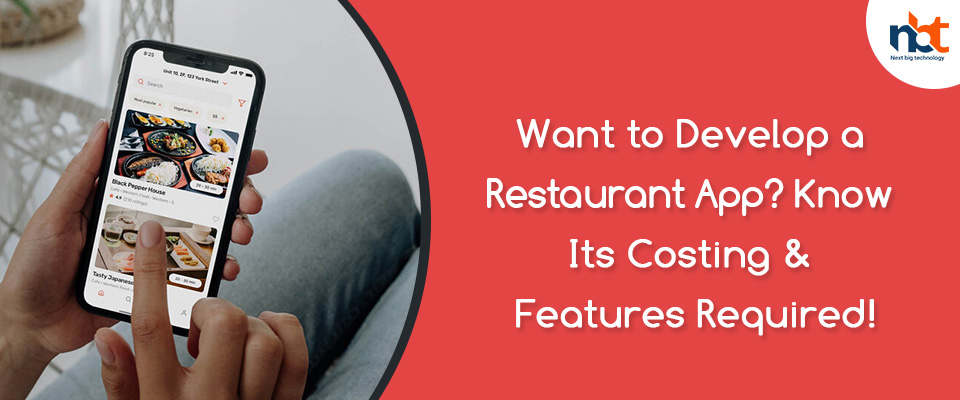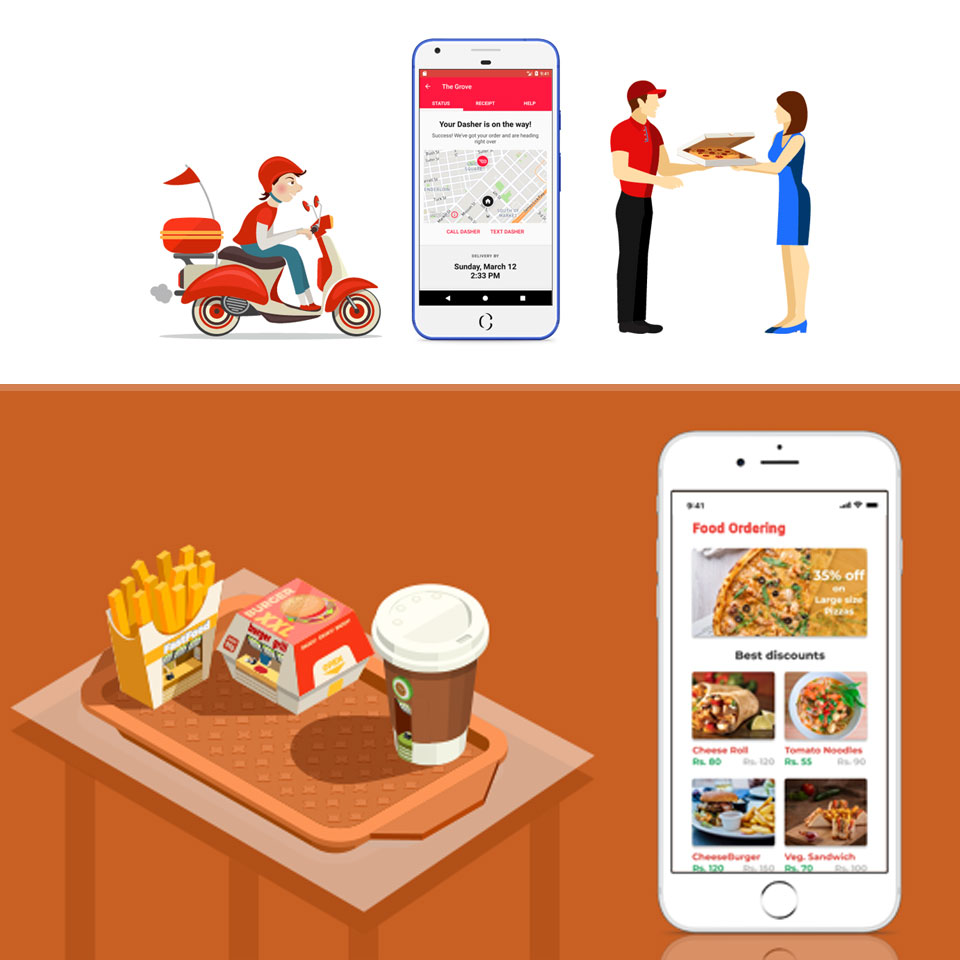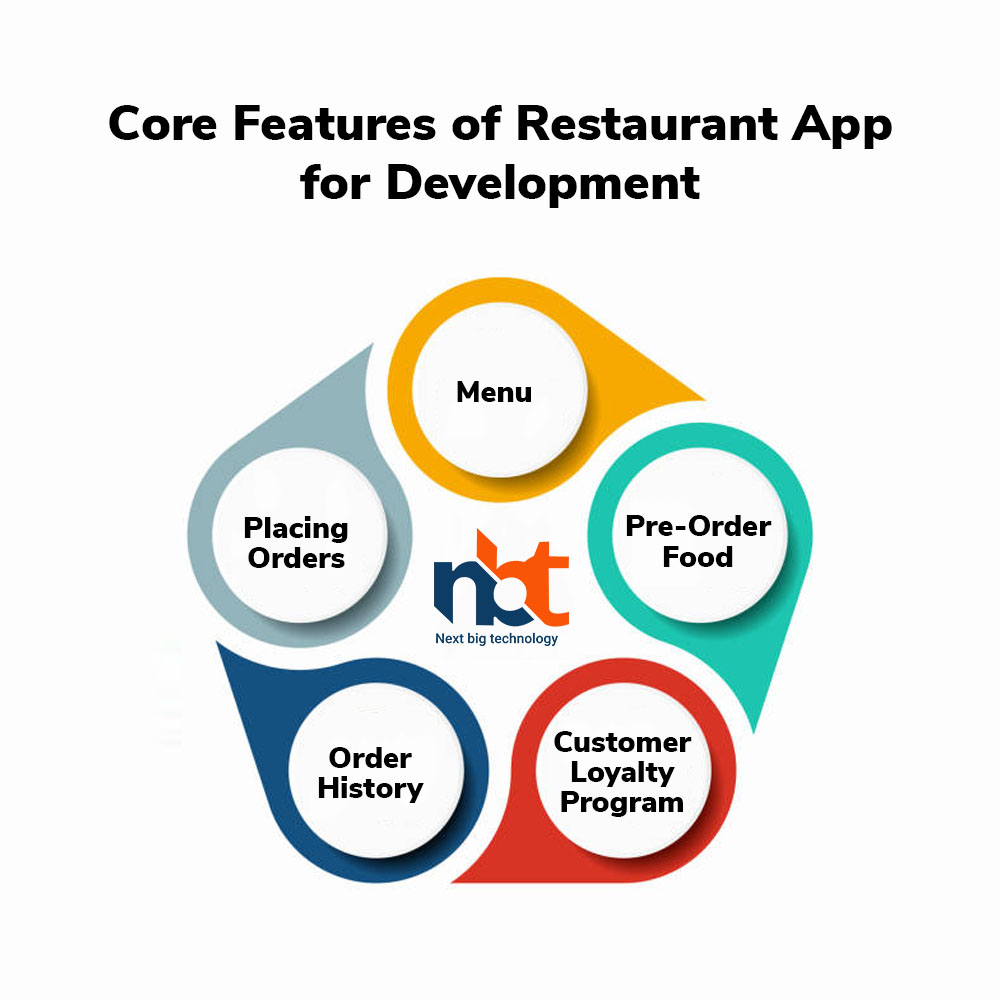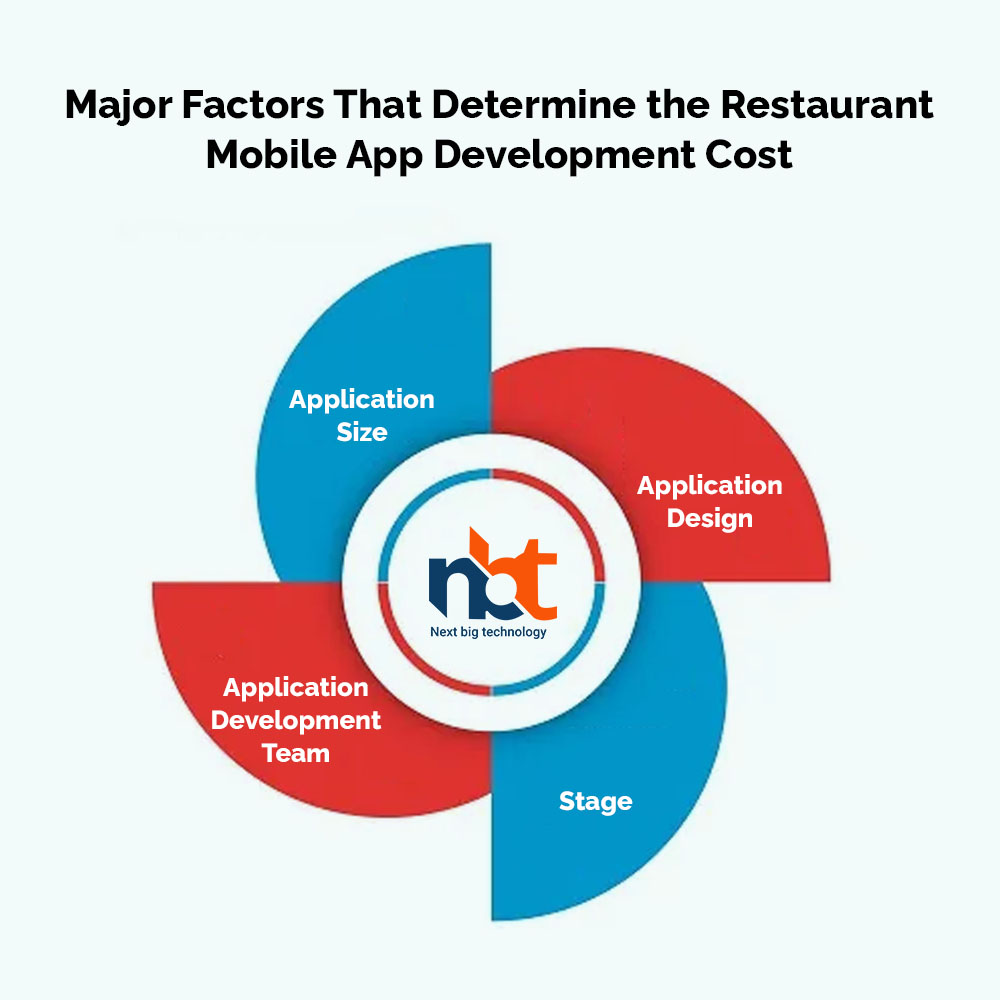Table of Contents
Introduction :
In the digital age, technology has transformed various industries, and the restaurant industry is no exception. With the advent of restaurant app development, dining experiences have been taken to a whole new level. These apps enable customers to explore menus, place orders, make reservations, and even provide feedback, all from the convenience of their smartphones. In this article, we will dive into the world of restaurant app development, exploring its key features, benefits, and the impact it has on the restaurant industry.
Understanding Restaurant App Development :
Restaurant app development involves creating mobile applications that cater to the unique needs of the restaurant industry. These apps offer a range of features and functionalities designed to enhance the dining experience for both customers and restaurant owners. The development process typically includes the following stages:
1 Conceptualization:
This stage involves understanding the target audience, identifying the app’s purpose and goals, and defining the key features that will set it apart from competitors.
2 Design:
The design phase focuses on creating an intuitive and visually appealing user interface (UI) and user experience (UX). It involves wireframing, prototyping, and incorporating branding elements to reflect the restaurant’s identity.
3 Backend Development:
Backend development involves building the server-side infrastructure, handling data storage, and implementing features such as menu management, order processing, and reservation systems. Technologies like Node.js, Ruby on Rails, or PHP are commonly used for backend development.
4 Frontend Development:
Frontend development focuses on implementing the UI design, ensuring responsiveness across different devices, and incorporating interactive elements for a seamless user experience. Technologies like React Native or Flutter are often used for cross-platform app development.
5 Testing and Deployment:
Rigorous testing is conducted to ensure the app’s functionality, usability, and performance. Once the app passes the testing phase, it is deployed to app stores for customers to download and use.
Also Read :How Much Cost to Develop a Local Restaurant Delivery App Like Postmates?
Key Features of Restaurant Apps
-
Menu Exploration:
Restaurant apps allow customers to browse menus, view food images, and access detailed descriptions of dishes. This feature provides customers with a comprehensive understanding of the restaurant’s offerings, helping them make informed decisions.
-
-
Online Ordering and Delivery:
-
Restaurant apps enable customers to place orders directly from their smartphones. They can select dishes, customize options, specify dietary restrictions, and even choose delivery or pickup options. Integrations with third-party delivery services like DoorDash or Uber Eats streamline the ordering and delivery process.
-
Table Reservations:
Table reservation features allow customers to book tables in advance, ensuring a smooth and convenient dining experience. Users can choose their desired date, time, and party size, reducing waiting times and enhancing customer satisfaction.
-
-
Loyalty Programs and Discounts:
-
Many restaurant apps incorporate loyalty programs, rewards, and discounts to incentivize customer loyalty. These features can include points accumulation, exclusive offers, birthday rewards, and personalized promotions, fostering customer retention.
-
-
Real-time Updates and Notifications:
-
Restaurant apps provide real-time updates on order status, reservation confirmations, and promotions. Push notifications keep customers informed about special offers, events, or changes in operating hours, enhancing engagement and keeping them connected with the restaurant.
-
Customer Feedback and Reviews:
Feedback and review features allow customers to share their dining experiences, rate dishes, and provide valuable feedback to the restaurant. This feature helps restaurants improve their offerings and build customer trust.
Also Read : Everything You Need to Know About Developing a Restaurant Reservation App
Benefits of Restaurant App Development:
-
-
Enhanced Customer Experience:
-
Restaurant apps provide a seamless and personalized dining experience for customers. They can easily explore menus, place orders, make reservations, and provide feedback, all from their smartphones. This convenience and ease of use enhance customer satisfaction and loyalty.
-
-
Increased Efficiency:
-
Restaurant apps streamline various processes, such as order management and table reservations, reducing manual tasks and improving operational efficiency. This efficiency enables restaurants to serve more customers and optimize their resources.
-
-
Improved Order Accuracy:
-
By allowing customers to customize their orders directly in the app, the likelihood of errors in order taking and communication is significantly reduced. This leads to improved order accuracy and customer satisfaction.
-
-
Expanded Customer Reach:
-
Restaurant apps enable restaurants to reach a wider audience beyond their physical location. Customers can discover new restaurants, explore menus, and place orders from anywhere, increasing the potential customer base.
-
-
Data-Driven Insights:
-
Restaurant apps collect valuable data on customer preferences, ordering habits, and feedback. This data can be analyzed to gain insights into customer behavior, identify popular dishes, and make informed business decisions to improve offerings and marketing strategies.
-
-
Marketing Opportunities:
-
Restaurant apps provide a direct channel for targeted marketing and promotions. By leveraging customer data and preferences, restaurants can send personalized offers, loyalty rewards, and promotional campaigns to engage and retain customers.
Also Read : Importance of food delivery app for your Restaurant business growth
Challenges in Restaurant App Development :
Developing a successful restaurant app comes with its own set of challenges. Some of the key challenges include:
1 Integration with Existing Systems:
- Integrating the app with existing restaurant systems, such as POS (Point of Sale) systems, inventory management, or online payment gateways, can be complex. Seamless integration ensures smooth operations and data synchronization.
-
2 User Adoption and Engagement:
Encouraging customers to download and regularly use the restaurant app can be challenging. Providing incentives, offering exclusive promotions, and ensuring a user-friendly experience are crucial for user adoption and engagement.
-
3 Handling High Traffic and Order Volume:
Restaurants with popular apps may experience high traffic and a large volume of orders. Ensuring the app’s scalability and backend infrastructure can handle the load is essential to avoid downtime or slow performance.
4 Security and Data Protection:
Restaurant apps handle sensitive customer data, including personal information and payment details. Implementing robust security measures and complying with data protection regulations are vital to protect customer privacy.
-
5 User Experience and Design:
Creating an intuitive and visually appealing user interface (UI) and user experience (UX) is crucial for the success of a restaurant app. Ensuring ease of navigation, seamless ordering processes, and responsiveness across different devices is essential for user satisfaction.
Also Read : Want to Develop a Restaurant App? Know Its Costing & Features Required!
-
Conclusion:
Restaurant app development has revolutionized the way customers interact with restaurants, offering convenience, personalized experiences, and enhanced customer engagement. By leveraging features like menu exploration, online ordering, table reservations, and loyalty programs, restaurant apps have transformed the dining landscape. Despite challenges in integration, user adoption, and scalability, the benefits of restaurant app development are evident in improved customer experiences, increased operational efficiency, and data-driven insights for business growth. As technology continues to advance, the future of restaurant app development holds exciting possibilities, such as AI-powered recommendations, voice-activated ordering, and augmented reality (AR) dining experiences. The marriage of technology and the culinary world is shaping a new era of dining, where customers can savor delicious meals with just a few taps on their smartphones.
Thanks for reading our post “Restaurant App Development: Enhancing the Dining Experience with Technology”. Please connect with us to discuss more about Restaurant App Development




















